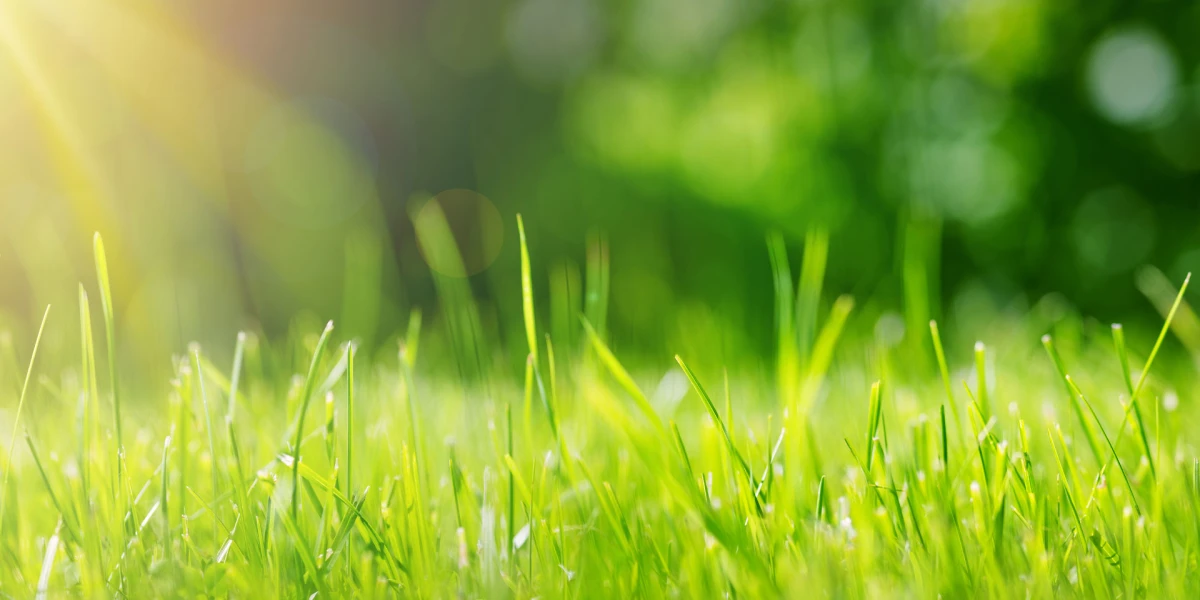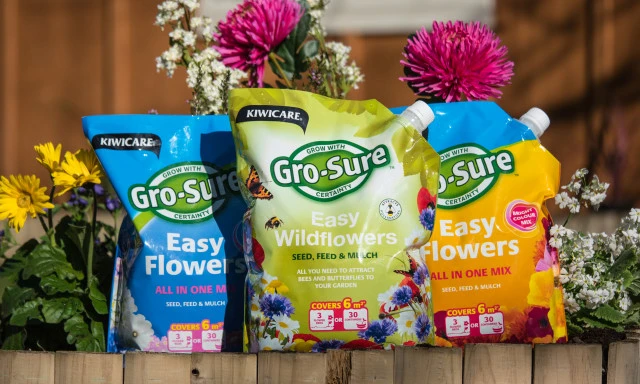1-2-3 Lawn Care Programme
Keeping your lawn looking healthy, green and weed free can be a tough task. It might look great over summer, and then the by the time the next summer roles around it's a weedy, patchy, bedraggled mess that's riddled with moss. That doesn't mean you need to kill it off and start again. You can absolutely bring your lawn's health back and then keep it looking good. That's why we've created this simple guide to help you maintain your lawn throughout the seasons like a pro.
Understanding your lawn
Before you get started on your lawn maintenance plan, it helps to understand what type of lawn you're dealing with as it can affect the products you use. The composition of lawns varies widely. Many of the grasses used in lawn seed mixtures are specially bred for characteristics like fine leaves, hard wearing, persistence, and disease and pest resistance.
Lawns are ‘natural’ habitats for grasses. Preferred varieties tend to include rye, fescue and browntop varieties. On the other hand grasses like kikuyu; couch/twitch and buffalo grass are wide leaf, pervasive grasses that are considered weeds in fine turf lawns. But they are sometimes chosen as the lawn grass in warmer parts or where the lawn needs to be hardwearing and tolerant of drought. If you're not sure what type of lawn you have look at the width of the blade for grass. If it's a thin blade, it's commonly referred to as a 'fine turf' and may be more susceptible to chemical burning. Products will usually call our a warning around use on 'fine turf.' If the blade of grass in your preferred lawn is wide and the grass is a pervasive spreader, it's more likely to be something like kikuyu, couch/twitch or buffalo grasses. Some lawn weed killers can damage these grasses as they're designed to target wide leafed plants. Typically products that may cause damage to these types of grass will also usually provide a warning on the packaging.
1. Weed Control
Most weeds in grass lawns are broadleaf weeds (not grasses). Herbicides (weed killers) for lawns selectively kill broadleaf weeds without harm to the lawn grass. Such herbicides work best on growing lawns which have adequate nutrient.
- Get rid of the weeds - LawnPro Turfclean Ultra has been formulated for the control of the widest range of broadleaf weeds in New Zealand lawns. The combination of 4 active ingredients is balanced to ensure the most common weeds in New Zealand lawns are controlled with not risk of burning the fine lawn grasses grown as lawns in New Zealand.
- For lawns prone to Onehunga prickle weed apply LawnPro Turfclean Ultra orLawnPro Prickle and Hydrocotyle before the weed flowers and produces its prickly seeds (Sept-Nov).
- If Kikuyu is running rampant in your lawn and you want to supress its growth then treat your lawn with LawnPro Prickle and Hydrocotyle.
- In spring and autumn apply LawnPro Mossclear to kill moss and its spores. Then scarify to remove dead moss.
- Coarse grass weeds in lawns can be spot treated by painting the central crowns with Weed Weapon Invade Gel.
If you have a 100% Tall Fescue or 100% Turf Ryegrass lawn and are looking to prevent or kill weeds like Poa, Summer Grass, Chickweed, Cleavers, Fumitory, Redroot Sow, Thistle, Spurrey Summer Grass, and Wild Portulaca then treat your lawn with LawnPro Ultra Poa Lawn Weed Control in spring or autumn to keep your turf pristine.
2. Boost the Lawn Grass and Sweeten the Soil
The majority of broadleaf weeds in lawns thrive in acidic soils. Healthy thick swards of lawn grass are resistant to disease and out-compete weeds, reducing the need for applications of herbicide. Applying fertiliser and raising soil pH will encourage lawn grass and discourage weeds.
Kiwicare's specially developed LawnPro Natural Boost product is a granular fertiliser formulated with natural compounds to be safe for children and pets once applied. It not only feeds and greens your lawns, it also helps to condition your soil improving it's water holding capability. LawnPro Green & Grow is another great lawn fertiliser that greens lawns, improves soil conditions as well as stimulates the growth of strong stems making your lawn more disease and pest tolerant.
LawnPro Ultra Lawn Greener is a fast action formula for when high quality colour and vigour is required in the short term (even when conditions aren’t ideal). LawnPro Ultra Year Round Lawn Fertiliser is a complete blended mineral-based fertiliser; of macro and micro-nutrients that provide premium results. It greens, builds strong roots and feeds your lawn all year round.
3. Thicken the Lawn and Fill in Bare Patches
Once the weeds are dead thy can be raked out and the lawn thickened the grass encouraged to fill in the bare patches left by the weeds.
- Loosen the soil surface with a fork and rake it to leave a fine loose layer of soil on the surface.
- Water the lawn thoroughly so the soil 15 cm deep is damp.
- Sow LawnPro Lawn Thickener over the lawn. Lightly rake to incorporate the seed into the surface.
- Where birds are a problem, net the area or tie plastic supermarket bags to canes in the lawn.
- If the weather remains dry for two or three days water gently with a sprinkler.
- Grass should sprout seven to 10 days after sowing
Ongoing Lawn Care
Watering
Lush green healthy lawns need water for growth. However, the water is taken up by roots and not leaves; wet leaves promote disease and shallow water evaporates off before roots can absorb it. When required water should be applied so that it seeps deep to where deep rooting grasses can reach it and it will not evaporate off. Many weeds have large root systems and are better able to survive in dry conditions so they can out-compete the lawn grass, so don’t let your lawn suffer drought stress.
- When required, water lawns thoroughly in the morning. Because water on the grass or the soil surface evaporates off quickly thoroughly watering once or twice a week is preferable to light watering frequently.
- Don’t let your lawn soil become dry deep down. During very hot dry conditions some dry soils do not absorb water well and the water runs off rather than percolating down through the soil to the deep roots.
- The addition of gypsum to lawn soils helps break up compacted clay soils and improves loam and water movement deep into the soil.
Mowing and Thatch Removal
Mowing gives an even attractive tidy lawn. However, it is important not to mow lawns too short as this encourages weeds by letting them out-compete the grass. Do not mow grasses below these ideal heights:
- Fine browntop/fescue lawns mow at 20 mm.
- Ryegrass lawns mow at 30-35 mm.
- Never mow off more than 1/3 of the height of the grass.
- Raise the mower height another notch for the final cut of the year in autumn/winter.
- Collect clippings when mowing. Mulching lawns (leaving the clippings) is not recommended; the dead grass becomes a place for disease spores and weed seeds to survive and although the mulch will suppress some weeds it will also suppress grasses.
- Ensure your lawn mower blades are sharp and clean. Blunt lawnmower blades damage the grass leaves leaving ragged edges that will brown off and are more susceptible to disease.
- Balance the build-up and breakdown of lawn thatch with LawnPro D-Thatch.


